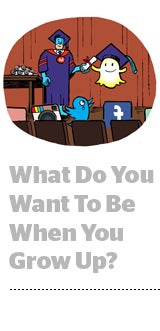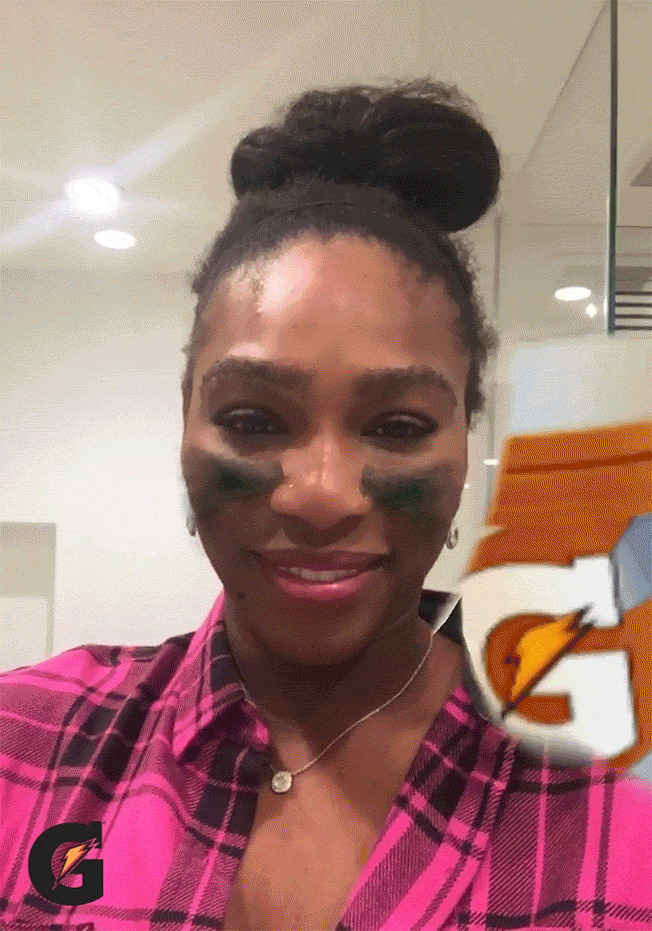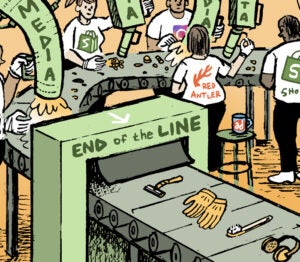 A little less than a year ago, Snapchat was still at the beginning stages of working out its advertising strategy.
A little less than a year ago, Snapchat was still at the beginning stages of working out its advertising strategy.
Its ad sales team felt small, at least from the perspective of some agency execs, and unable to keep up with agency and advertiser demand.
But in recent months, Snapchat seems to be taking itself seriously as an ad partner. It hired Google’s Gunnard Johnson as head of quantitative ads research and Sriram Krishnan, who used to lead mobile monetization and publisher products for Facebook.
The media planning team at AKQA has noticed a marked improvement in Snapchat’s ad sales org in terms of availability, eagerness to sell and overall knowledge of the product. These days, it’s got around 100 direct sales reps, Snapchat told AdExchanger.
“Initially, they were lean on salespeople and only offering these half-million-dollar buy-ins, where you had to take their entire audience for a whole day, and that wasn’t so appealing to us,” said Scott Symonds, AKQA’s managing director of media and data. “Facebook is still the gold standard, but Snapchat’s getting more attractive with better ad opportunities and a better sales team.”
In order to bolster those opportunities, Snapchat is also working out a measurement strategy and establishing relationships with data companies like Millward Brown and Datalogix, which is helping Snapchat make its case to agencies.
And for verification, rather than asking advertisers to rely on screengrabs from influencers to verify campaign metrics, which was the case as recently as November, Snapchat is laying the groundwork for third-party reporting metrics through deals with Nielsen, Innovid, Sizmek and TUNE.
Beyond cooking up an ads API, Snapchat is also planning on introducing third-party ad serving courtesy of Google in late Q2, according to AKQA, which was briefed in the matter.
Agency sources are pleased with these initial overtures, but they observe that Snapchat still has a ways to go.
“Google and Facebook have swarms of people focused on agencies, whereas Snapchat is just now ramping this resource,” said Steve Katelman, EVP of global strategic partnerships at Omnicom Media Group, noting that advertisers are beginning to embrace the platform.
To be fair, it’s only been less than a year since Snapchat’s official advertising debutante’s ball at Cannes, when Snapchat CEO and co-founder Evan Spiegel first started actively pitching the platform’s so-called 3V ad initiative around vertical video views – but Snapchat is already hooking big fish.
AdExchanger Daily
Get our editors’ roundup delivered to your inbox every weekday.
Daily Roundup
Burberry, for example, tapped Snapchat on Tuesday to launch its male fragrance, becoming the first luxury brand to do a Discover takeover. Goldman Sachs, Domino’s, Jeep, BMW, McDonald’s, Ritz Crackers and a host of other advertisers have also recently run campaigns on Snapchat.
Snapping To Attention
But even as Snapchat makes inroads toward building out a more solidified ad infrastructure, there’s still room to grow. Agencies cite issues with audience targeting, limited creative assets and gauging performance.
“But we have had some major successes,” said Katelman, such as the Gatorade geofilter that ran during the Super Bowl in February. “It showed users pouring Gatorade over their heads [and] it was viewed [more than] 160 million times.”
Though Snapchat has piqued advertisers’ interest – Katelman said it was a hot topic at SXSW, even though the social network didn’t have a presence there – prudent clients are reluctant to go beyond a one-off buy designed to reach millennials.
The volume is there, though. According to recent research from comScore, more than three in five of every 18- to 24-year-old in the US accesses Snapchat on their phone every month, and adoption among older millennials is picking up momentum, with 31% penetration.
But Snapchat’s highly engaged and desirable audience – the platform claims it has 100 million daily actives and that 63% of smartphone owners in the US between 13 and 34 are Snapchatters – doesn’t automatically give it the same importance as Facebook.
Though that could change. Just four years ago, Facebook was still struggling to monetize its mobile users.
“Facebook is an efficient provider – it’s earned its position,” Symonds said. “We still need to see where Snapchat fits into this.”
Snapchat has been building out its user interface at the same time as it’s been working on its ad infrastructure.
Within one week in late March, Snapchat spent $100 million to acquire customizable sticker app Bitstrips and rolled out a fairly significant redesign that saw the addition of new multimedia choices and enhanced video and chat functionality, along with a host of new sticker options.
It’s a UX play with advertising implications.
“These new features and product innovations also have a secondary impact on advertisers in that they should make Snapchat a bit more ubiquitous and help more consumers and marketers get on board,” said James Connelly, co-founder and CEO of mobile agency Fetch.
From there, Snapchat could be the next broadcast play advertisers are looking for, said Paul Cimino, former CEO of Brillig and Snickelways.
Facebook and Google are primarily direct response mechanisms, lower-funnel stuff, and the TV “is the old guard way to create brand” – but there’s no new guard,” said Cimino.
Ideally, Snapchat could present that TV-like opportunity to hook millennials. It’s one area where “Snapchat has a chance to leapfrog Facebook,” Cimino said.
That’s assuming, of course, that Snapchat’s verification and measurement keep advertisers coming back for repeat buys. Snapchat told AdExchanger that it retains around 90% of its advertiser base, most of which has been top of the funnel stuff.
But value to advertisers will mostly it will hinge on performance ads, like the app install campaigns it’s reputedly testing out with TUNE, Connelly said, rather than the massive Apple-esque minimum buy-ins (iAd: R.I.P.) that Snapchat was rocking at the beginning.
According to some reports, those prices have plummeted from the $750,000 it once cost for a one-day video to around $50,000, depending on the ad product. Snapchat denies a price fluctuation.
Live Stories go for about $100,000, while targeted buys – Snapchat allows advertisers to target segments of its audience by gender, location, device type and OS – come in a little cheaper depending on the campaign parameters, Snapchat said. On-demand geofilters – custom user-generated filters based on time and place – can cost as little as $5 each or as much as $15,000.
Regardless, success means scale.
“Snapchat is showing signs of being able to eat at the table, but they still need to prove their worth, and that will come, although not exclusively, from more performance-led formats and opportunities,” Connelly said. “Snapchat is very concerned about its experience, but in order to be a real advertising player, you need scale, and to get scale, you need thousands of advertisers around the world consistently spending.”
And that means moving away from one-offs. Because the new hotness isn’t always going to be the new hotness.














